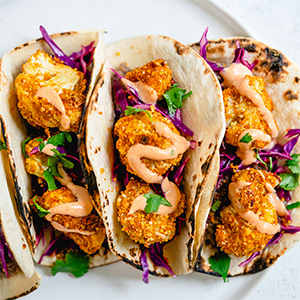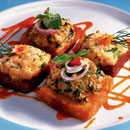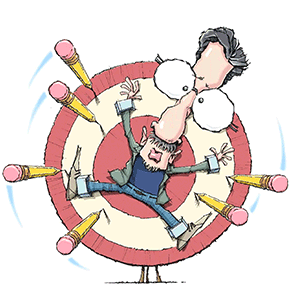With this ancient tool, pasta comes with strings attached
Published in Variety Menu
Being a mom is a tough job, but it also can come with some amazing perks. That includes terrific gifts on Mother's Day as tokens of appreciation for everything you've done for your kids over the years.
This year, I got an Italian chitarra (pronounced key-TAR-ah). I've been eyeing them for years on various Italian cooking websites but never bought one because it seemed an indulgence in a kitchen already outfitted with every imaginable appliance and gadget.
Chitarra — the Italian word for "guitar" — is an ancient culinary tool used for making hand-cut spaghetti. Thought to have originated in the Abruzzo region in the mid- to late 1800s, it is a wood-framed box strung with evenly spaced wires that cut fresh pasta into long, thin spaghetti with distinctive square edges. It can easily be tightened with a screwdriver as it loosens, so it is hard to wear out.
One reason I wanted a chitarra is because it has roots in L'Aquila, the capital city of Abruzzo. My neighbor Josephine grew up in the tiny commune of Opi that lies south of the historic city and I've been obsessed with the food served there ever since visiting her family home in the mountains following a devastating earthquake in 2009.
My favorites included spaghetti alla chitarra, which is tossed with tomato sauce or a slow-cooked ragu and topped with grated pecorino, a salty and pungent sheep's milk cheese that's a staple in the mountainous region.
The other reason I wanted one: It just looks like a fun way to make pasta, especially if I can someday get my grandkids involved.
While I'm far from an expert — I'm largely self-taught — I've mixed, kneaded and rolled (with a hand-crank pasta machine) countless batches of homemade pasta dough over the years for Italian noodle dishes, lasagnas and ravioli. I've also used my pasta maker to roll out dough for dumplings. So I was pretty sure that with some practice, I could master the chitarra, too.
Just to be sure, I got Alta Via executive chef Joe Perino to give me a quick tutorial in the restaurant's Fox Chapel kitchen. A big Burrito Restaurant Group veteran, Perino also worked at Soba and Eleven in the early 2000s, and ran Lake Erie Pasta Co. in 2019-2023.
He uses an egg-based dough for all of his hand-cut pastas because it's easier to work with and roll into thin sheets. (The fats and emulsifiers in egg yolks help weaken gluten development.) Eggs also add to the flavor and color of the pasta.
The 43-year-old chef is a stickler for allowing the dough to rest for at least three or four hours before rolling so it becomes fully hydrated and the gluten relaxes. That's a lot longer than the half-hour or so I usually allow my dough to sit on the counter before rolling.
"You'll notice a difference," he assured me.
Perino's dough boasts a blend of soft wheat "OO" flour and Italian semola, which has a finer grind than semolina because it's milled twice, giving the pasta an extra bite and firmer texture. He also isn't afraid to be generous with the "bench flour" he throws on the work surface to keep the dough from sticking when it goes through the roller.
"But yes, you can flour too much," he says when I ask if you need to be careful. In other words: Don't go crazy!
Whether you roll the dough by hand or use an electric roller, the goal is to end up with dough that's about 1/8 -inch thick. (For hand-cranked pasta, this is usually the third or fourth setting on your machine.)
If you're not great at eyeballing, you may want to have a ruler handy when making pasta with a chitarra because the large rectangle of dough that gets laid across its strings after rolling should be slightly smaller than the tool's full surface area, says Perino. The dough will stretch slightly as you roll it, and you don't want it to run over the edges.
You also want to make sure to dust both the chitarra and the top of the dough with flour before rolling, "or it will stick together," says Perino. To speed the process, he also recommends having all of the dough rolled out and cut to size before starting.
The actual act of rolling and cutting the dough into square spaghetti is easy enough. As you roll over the dough with a rolling pin while applying an even amount of pressure, the strings will simultaneously cut it. The cut pasta then falls below, where you can gather and wrap it into nests.
The strings — which can be adjusted with a screwdriver — should feel tight when you're rolling "but not too bouncy," says Perino, You also need to be mindful that they don't overlap, Perino says, or the dough won't cut cleanly.
If you're not using the pasta that day, no worries: Lightly dust the nests with flour, place on a sheet tray and freeze until solid. Then, transfer to a freezer-safe bag for storage.
Fresh pasta takes only about 90 seconds to cook, Perino notes, and it's key to keep the pasta moving by stirring so it doesn't stick and cooks evenly. You'll want to have your sauce(s) ready to go before throwing the tender strands of cut dough into the pot of boiling, salted water.
Two of Perino's favorite ways to serve chitarra pasta are either with a spicy Calabrian cream sauce or tossed in a simple cheese-and-black pepper sauce known as cacio e pepe. Both are easy for a home chef, he says, as well as quick to pull together.
Hand-cut pasta is an art form that should be celebrated, the chef notes. "For me, it's just one of those really traditional ways [to do it]."
With practice, it's also "easy-ish" for most home chefs, he says, adding, "It's special."
I agree, and can't wait to tell Josephine — who is celebrating her 90th birthday — that I've mastered it.
Egg Dough for Pasta
PG tested
This easy dough can either be mixed by hand or in a KitchenAid mixer. Note that the recipe calls for semola and not semolina flour. Though they are both made from durum wheat, semola is milled twice, which makes it finer than semolina.
116 grams (about 1/2 cup) "00" flour
33 grams (about 1/4 cup) Caputo semola flour
1 gram salt
1 whole egg (65 grams)
13 grams (about 1 tablespoon) egg yolk
5 grams (about 1 teaspoon) extra-virgin olive oil
Separately measure all dry ingredients and place in the bowl of a mixer fitted with the hook attachment.
Add eggs, egg yolks and olive oil to the dry ingredients. Turn mixer on 1 and mix for 8 minutes. The dough should be cohesive and have little to no dry bits.
Remove dough from the bowl and wrap tightly in plastic. Let it rest and hydrate for about 1 hour and then divide into 4 equal pieces to get ready for rolling. Dough can also be refrigerated overnight if not using that day, but it's best to use it that day to avoid oxidation.
Makes enough dough for 2 servings.
— executive chef Joseph Perino, big Burrito
Calabrian Cream Sauce
PG tested
This creamy sauce comes together quickly with lots of mildly spicy flavor. You can find jarred chopped Calabrian chili peppers in Italian markets such as Pennsylvania Macaroni in the Strip District.
1/4 cup chopped shallot
1 bay leaf
1 sprig fresh thyme
1/4 cup white wine
2 cups heavy cream
1 tablespoon chopped or crushed Calabrian chili
Combine shallots, bay leaf, thyme and white wine in a sauce pot.
Place pot on medium heat and reduce until almost dry. Add cream and bring to a simmer. Keep an eye on it so the cream doesn't boil over!
Cook for about 6-8 minutes so that the cream reduces slightly. Remove from heat and stir in Calabrian chili and salt. Strain through a fine mesh strainer and chill in the fridge until ready to use.
Makes 2 cups of sauce.
— executive chef Joseph Perino, big Burrito
Cacio e Pepe
PG tested
This classic pasta dish that originated in Rome requires only a handful of ingredients, but you must take care with its preparation — if you cook the cheese too fast, you'll end up with big balls of protein that won't break down no matter how hard you stir.
Black pepper can be an aggressive spice, but toasting it in oil before adding the other ingredients makes it sweeter and more mellow.
4 tablespoons extra-virgin olive oil, divided
1 teaspoon coarsely ground black pepper
225 grams (around 1 cup) spaghetti alla chitarra
Kosher salt, to tast
2 tablespoons unsalted butter
2 ounces pecorino Romano cheese
Heat 3 tablespoons olive oil and about a teaspoon of black pepper in a medium skillet over medium-low heat until ingredients are fragrant and pepper is barely starting to sizzle, about 1 minute. Set aside.
Fill a medium sauce pot with water and season with a small pinch of salt, then bring to a boil over high heat. Add fresh spaghetti and cook until spaghetti is al dente.
Transfer 2 or 3 tablespoons of pasta cooking water to the skillet with the olive oil/pepper mixture and then stir in the butter to the pepper/oil/water/butter mixture. Using tongs, lift spaghetti and transfer it to the oil/butter mixture.
Add cheese to the skillet and mix until melted and creamy. If need be, add a few more tablespoons of pasta water to the skillet to adjust the consistency of the sauce.
Garnish with a little bit more cracked black pepper and fresh grated pecorino cheese.
Serves 1.
— executive chef Joseph Perino, big Burrito
©2025 PG Publishing Co. Visit at post-gazette.com. Distributed by Tribune Content Agency, LLC.









Comments